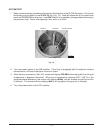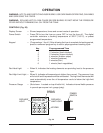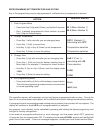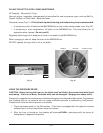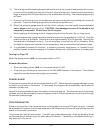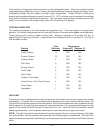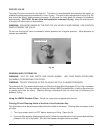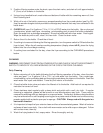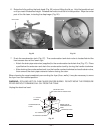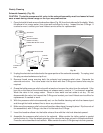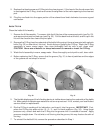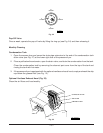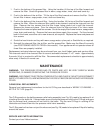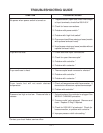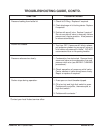
– 21 –
3. Position filtering system under the drain, open the drain valve, and drain oil until approximately
2" (5 cm) of oil remains in the kettle.
4. Using a long-handled brush, wash sides and bottom of kettle with the remaining warm oil, then
finish draining tank.
5. While oil is out of the kettle, remove any excess breading from the crumb catcher (see Fig. 22).
Use the wooden doughnut stick provided to dislodge any material that may have collected in the
kettle drain.
6. CAREFULLY pour 2 to 3 gallons (7.6 to 11.3 L) of COLD water into the kettle. Use a nylon pad
(nonabrasive, plastic web-type, nonrusting, nonshredding pad) to wash the kettle completely.
Drain the water into a drainage receptacle. Rinse the kettle well with clear water. Drain again.
Wipe the kettle dry with a soft, clean, lint-free cloth. Close the drain valve.
7. Return the oil to the kettle. Check the oil level.
8. If cooking is to resume following the filtering operation, turn the power switch to ON and allow the
fryer to heat. When the oil reaches cooking temperature (display shows idLE), place the frying
basket into the oil and begin cooking.
9. If cooking has concluded for the day, clean the fryer according to the CLEANING procedures
below.
CLEANING
WARNING: DISCONNECT ELECTRICAL POWER SUPPLY AND PLACE A TAG AT THE DISCONNECT
SWITCH TO INDICATE YOU ARE WORKING ON THE CIRCUIT BEFORE CLEANING.
Daily Cleaning
1. Before returning oil to the kettle following the final filtering operation of the day, close the drain
valve and pour 1 or 2 gallons (3.8 or 7.6 L) of cold water into the kettle. Use a web-type,
nonshredding, nylon scrubbing pad and thoroughly wash down the interior of the kettle. Drain the
wash water into a pail and discard. Towel dry the interior of the kettle.
2. Close the kettle drain valve and return the filtered oil to the kettle. Add fresh oil as required to
maintain the correct oil level.
3. Clean stainless steel regularly with a damp cloth and polish with a soft, dry cloth. If regular
cleaning is neglected, grease will be burned on and discolorations may form. These may be
removed by washing with any detergent or soap and water. Particularly stubborn discolorations
may be removed with a self-soaping scouring pad or a paste made of water and a mild scouring
powder applied with a plastic open pad or sponge. CAUTION: Always rub with the grain in a
horizontal direction.
4. It is important to keep the fryer exterior clean and free of accumulated grease. Wash all exterior
surfaces at least once daily. Use a cloth with warm water and a mild soap or detergent. Follow
with a clear rinse, then dry.
5. Wash the frying basket in hot, soapy water. Rinse thoroughly and dry.



